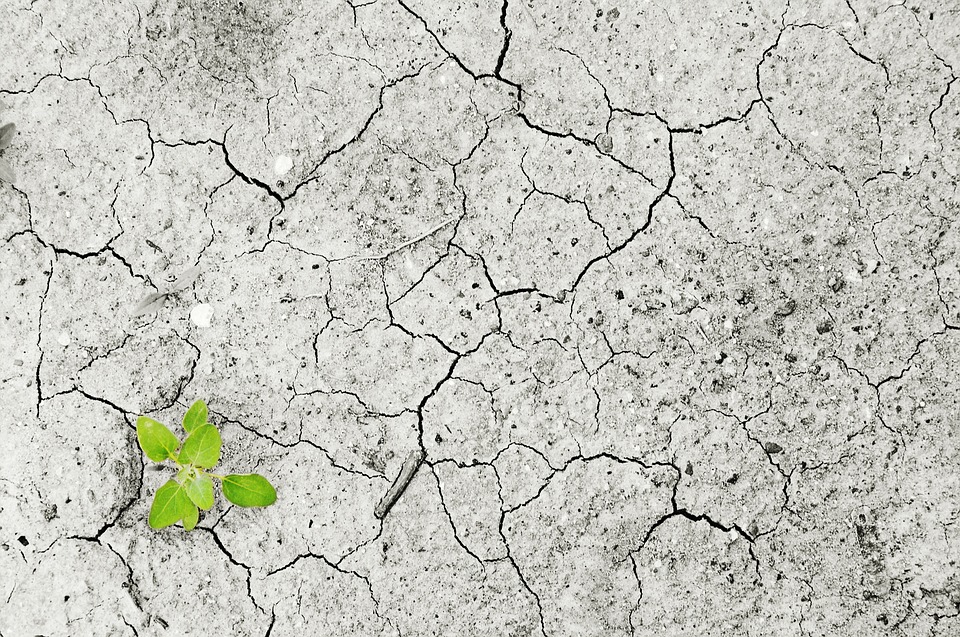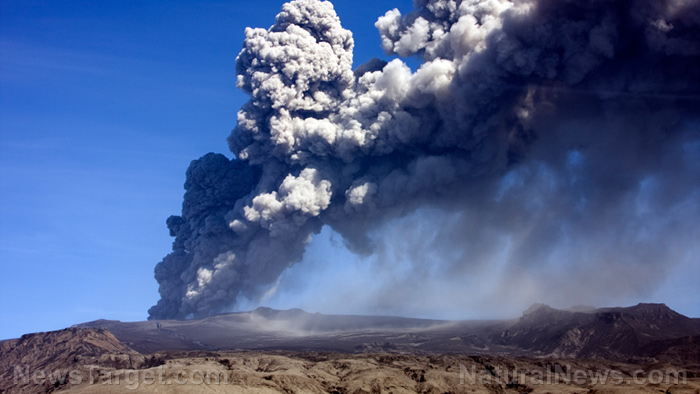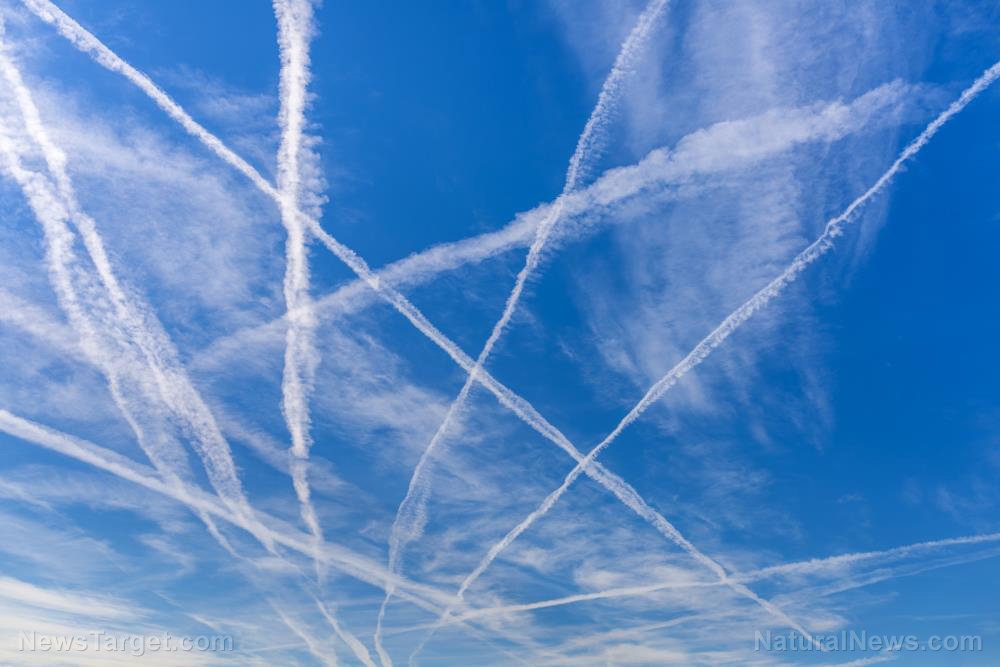Scientists identify jet stream patterns that can cause simultaneous heatwaves in different regions
07/19/2021 / By Nolan Barton

Scientists have identified systematic meanders in the globe-circling northern jet stream that have caused simultaneous crop-damaging heatwaves affecting parts of North America, Europe and Asia.
A study conducted two years ago found that certain kinds of waves in the atmospheric circulation can become amplified and then locked in place for extended periods – triggering concurrent heat waves in different breadbasket regions. Those affected areas collectively produce a quarter of the world’s food supply.
Two wavelengths of meanders cause heatwaves in agricultural regions
The jet stream is a fast-moving river of air that continuously circles the northern hemisphere from west to east. It generally confines itself to a relatively narrow band, but can meander north or south due to a feature called Rossby waves.
Rossby waves, also known as planetary waves, naturally occur in rotating fluids. These waves form within the Earth’s ocean and atmosphere as a result of the planet’s rotation.
There are two wavelengths of meanders in the northern hemisphere jet stream that can cause massive heatwaves across several major agricultural regions at once: One is a wave-7 pattern, which over the past 40 years has hurt crop yields in the red-marked areas of central and west North America, western Europe and western Asia, and the other is a wave-5 pattern, which has affected central North America, eastern Europe and eastern Asia.
Those relate to the north-south wobbles in the jet stream that produce either 5 or 7 peaks and corresponding troughs around the planet’s circumference.

“We found a 20-fold increase in the risk of simultaneous heatwaves in major crop-producing regions when these global-scale wind patterns are in place,” said lead author Kai Kornhuber, a postdoctoral researcher at Columbia University’s Earth Institute.
“Until now, this was an underexplored vulnerability in the food system. During these events, there actually is a global structure in the otherwise quite chaotic circulation. The bell can ring in multiple regions at once.”
Kornhuber warned that the heat waves will almost certainly become worse in the coming decades as the world continues to warm. The effect is potentially catastrophic because food commodities are increasingly traded on a global scale. There may be food shortages even in regions far from those directly affected by heatwaves.
Atmospheric wobbles can bring prolonged drought or abnormal cold spells
The atmospheric wobbles may pull frigid air masses from the polar regions – or hot ones from the subtropics – into the populous mid-latitudes. When the wobbles become particularly large, they can bring prolonged heat waves and droughts in summer, or abnormal cold spells in colder seasons.
Scientists have been able to pick out global patterns in the Rossby waves only in recent years, largely because the Earth’s atmospheric circulation is vast and complicated. The study used previous discoveries of such patterns and linked them to measurable losses in crop production.
They found that while waves of lower or higher lengths seem to wobble around randomly, wave-5 and wave-7 patterns can lock into a grid of symmetric, often much larger meanders centered over predictable regions. The wave-5 patterns tend to hover over central North America, eastern Europe and eastern Asia; the wave-7 patterns over western-central North America, western Europe and western Asia.
In both cases, the results are the same: Hot air swirls up from the south into the peaks, producing abnormal spikes in temperature that can go on for weeks. This in turn reduces rainfall, dries up soils and vegetation and kills crops in each region. (Related: Record heat, drought, and flooding sweeps US; food supply to take a hit.)
“Normally, low harvests in one region are expected to be balanced out by good harvests elsewhere,” said study co-author Dim Coumou of the Institute for Environmental Studies at VU University Amsterdam, who has been studying Rossby waves for years. “These waves can cause reduced harvests in several important breadbaskets simultaneously, creating risks for global food production.”
Heatwaves kill crops and people
In years when these amplified waves occurred during two or more summer weeks, cereal production went down as much as 11 percent in a single affected region and an average of 4 percent across all the affected regions. Price hikes in foods often followed.
Study co-author Radley Horton, a climatologist at Columbia’s Lamont-Doherty Earth Observatory, said: “If climate models are unable to reproduce these wave patterns, risk managers such as reinsurers and food security experts may face a blind spot when assessing how simultaneous heatwaves and their impacts could change in a warming climate.”
The heat waves hit in 1983, 2003, 2006, 2012 and 2018. Many temperature records fell across the U.S., Canada, Scandinavia and Siberia during those years. Aside from crops, thousands of people were killed by the heat waves – especially in Europe and Russia, where air conditioning is far less common than in North America.
Heavy rains cause floods and landslides
Meanwhile, opposite extremes can occur in the southerly troughs.
A precursor study by Kornhuber and others noted that during the 2018 northern heat waves, more southerly regions including the Balkans and Japan saw extraordinary rains and destruction from flooding and landslides. During a 2010 northern heat outbreak in Russia, concurrent flooding on the Indus River in Pakistan displaced millions and destroyed crops.
Many scientists believe that Rossby waves will grow and stall more often as the planet warms. Kornhuber said that this scenario is quite plausible, noting that almost all the global events have occurred since 2000. But he added that there’s not yet enough data to form a consensus on this.
Regardless, he said, “even if the frequency or the size of the [Rossby] waves doesn’t change, the heat extremes linked to the patterns will become more severe because the atmosphere as a whole is heating.”
Follow WeatherTerrorism.com for more news and information related to climate change and global warming.
Sources include:
Tagged Under: atmospheric wobbles, breadbasket regions, Climate, climate models, cold spell, crop production, Drought, environ, food security experts, food system, heat wave, heat waves, jet stream, meander, northern hemisphere, risk managers, Rossby waves, wave patterns, weather





















